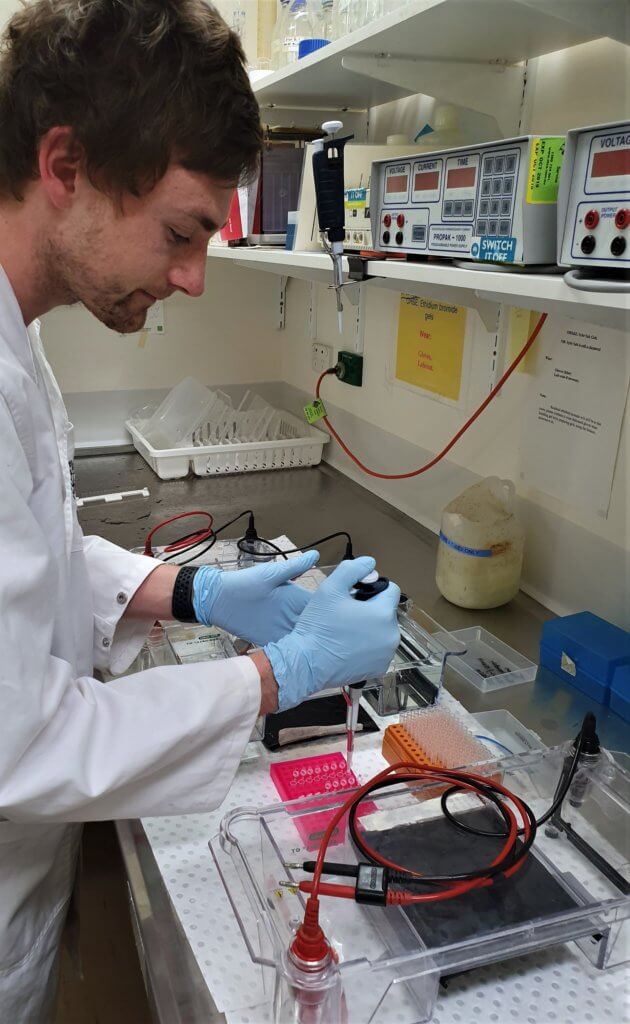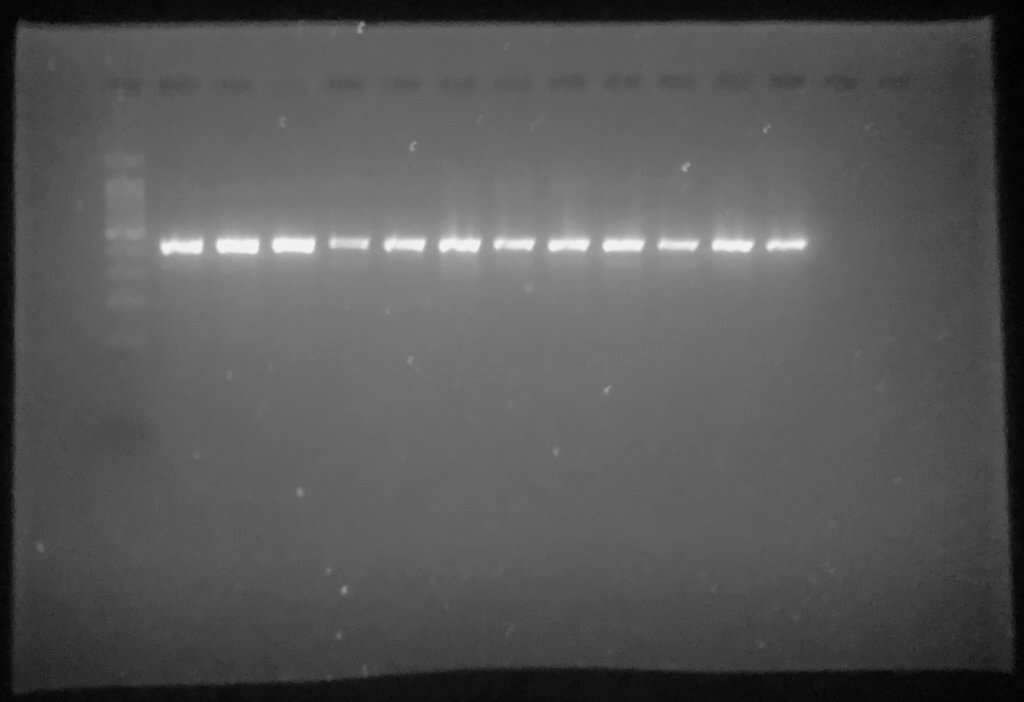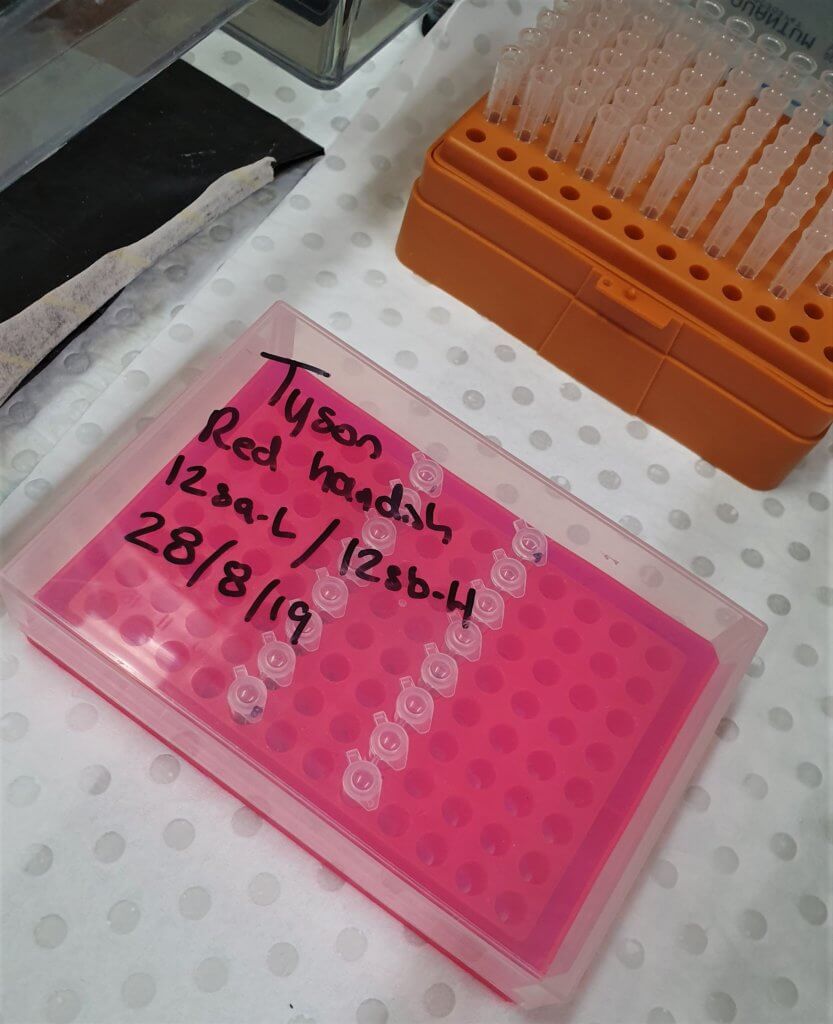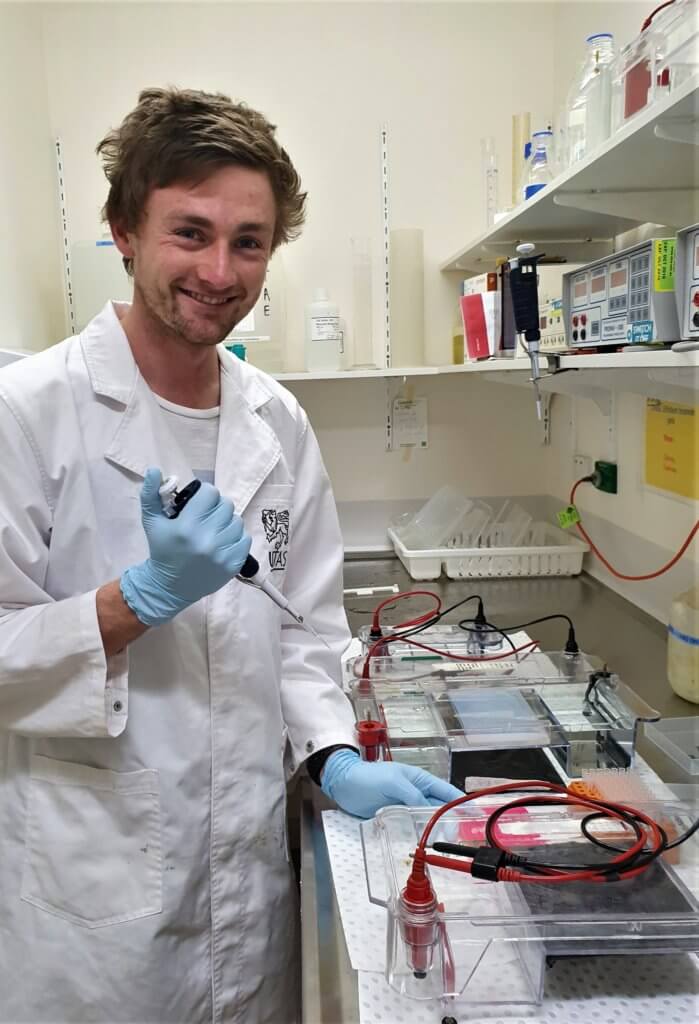The Best Practice Guidelines for Diving and Snorkelling with Handfish is a collaborative initiative promoting ethical diving with threatened and vulnerable handfish species in Tasmania.
These guidelines were developed by Tasmanian divers/snorkelers and scientists to highlight and minimize impacts to endemic and critically endangered handfish. The purpose is to:
Key Messages
Specific recommendations
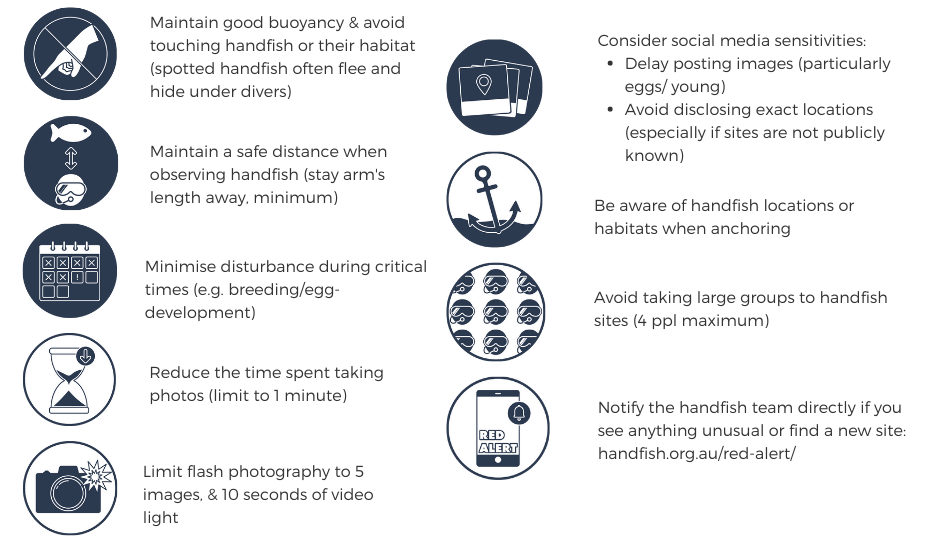
Download the Guidelines
Please download the trifold brochure here:
Contributors
Neville Barrett, Tyson Bessell, Ella Clausius, Karla Dutton, Patrick Eberhard, Dane Jones, Olivia Johnson, John Keane, Tim Lynch, Caroline Mason, Pete Roberts, Jane Ruckert, Janet Rutherford, Jemina Stuart-Smith, Matt Teston, Brad Turner, Benita Vincent, Tasha Waller, and Lincoln Wong,
Funding & support
Funding has been provided by the Australian Government (Oceans Leadership Package), as well as supported by the Institute for Marine and Antarctic Studies, Tasmanian Government, Tasmanian Mermaids, Go Dive, Tasmanian Divers Group, Tasha Waller - Immersed Images, Tasmanian University Dive Club, Scuba Diving Tasmania, Matt Testoni Underwater Photography, and Benni Marine Designs.
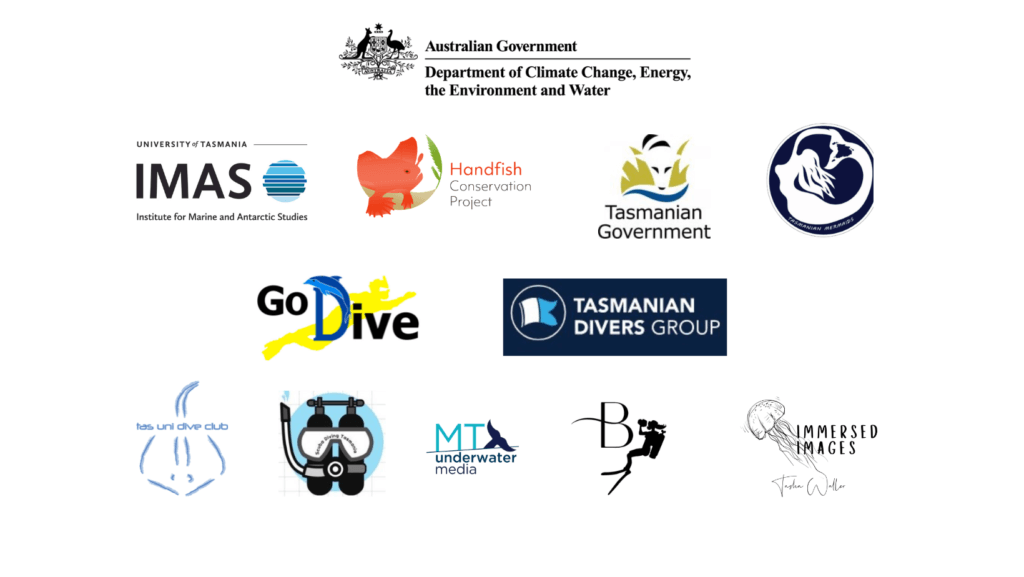

Ziebell’s handfish is named in honour of an avid diver and fisher named Allen ‘Alby’ Ziebell, who collected some of the original specimens. We were lucky to be contacted by Alby’s son Ian, who follows the handfish work – and helped fill in some of the details about his father and why this fish was named after him.
Allen and Irene Ziebell had moved to Hobart from Yeppoon, Queensland in 1974 to settle into a life of abalone diving and to raise their family. Alby had been skin diving and SCUBA diving since a very young age and was often seen with a camera around his neck. While in Tasmania he participated in several game fishing competitions and captures of numerous World, Australian and Tasmanian fishing records. Alby towed a boat all around Tasmania to chase the weather and dived most of the coast of Tasmania in the years searching for abalone. But he was also fascinated by the marine life in general.
Alby loved the ocean and spent most of his life on and in the water taking photos of the sea creatures. He was regarded by some as one of Australia’s most talented underwater photographers – eventually going on to record the first images of the schooling hammerhead sharks (at Osprey Reef, Queensland), as well as some of the early images of several handfish species.


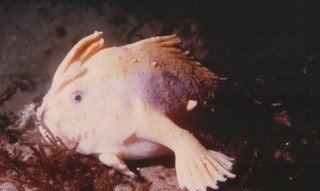
During his time in Hobart, Alby had collected some handfish from his dives in south-eastern Tasmania and had them in a fish tank at home in late 1970s. It was at this time that Alby was contacted by Peter Last (senior curator at CSIRO's Australian National Fish Collection) to view the fish. Alby ended up donating the fish to CSIRO for research purposes – and it was these specimens that were first used among the first of this species to be studied.
Dr Peter Last said that Allen Ziebell had made a significant contribution to the collection of the species and drew considerably attention to handfishes in general – and as such, the species was named in his honour (named by Last and Gledhill, 2009).
~ Alby Ziebell 1949-2003
More on Ziebell’s handfish
Ziebell’s handfish is Critically Endangered and is known from eastern and southern Tasmania but has not been seen since ~2005. It is thought to reach around 15cm and is found in 10-20m depth.
Colour morphs - Note there appears to be different colour morphs of Ziebell’s handfish – once with pale body, purplish patches dorsally, and striking, yellow-edged fins, being the typical Ziebell’s colour morph. However, 1981, a local underwater photographer, Ian Loney, captured an image of a large, densely mottled, purplish handfish at Waterfall Bay (Tasman Peninsula) at about 10 m depth – this form has been subsequently referred to as ‘Loney’s Handfish’ (Last and Gledhill, 2009).
References
Last, P., Gledhill, D., 2009. A revision of the Australian handfishes (Lophiiformes: Brachionicthyidae), with descriptions of three new genera and nine new species. Zootaxa 2252, 1-77.
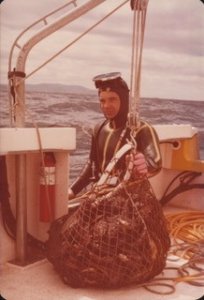



Images courtesy of Ian Ziebell (and cover image by Andrew Green). We'd like to thank Ian Ziebell for passing on the images and words for this article, and Dr Peter Last for his input.
One of the key threats to Red handfish survival is the loss and degradation of their habitat. This could happen for several reasons, including climate change, land-based pollution or siltation, too little, too much, or the wrong nutrients. An increase in Short Spined Urchins (Heliocidaris erythrogramma) has had the clearest impact on Red handfish habitat in recent times though, leading to a decrease in seaweed and the persistence of barrens (areas devoid of kelp). Given Red handfish use seaweed/seagrass as shelter from predators and to lay their eggs on, increases in urchin numbers pose a very serious threat to their survival.
Managing the habitat was also an important component in the lead-up to the release of juvenile Red handfish in these areas (see more HERE).
Increases in native urchins have occurred at one of the Red handfish sites previously; in late 2018 the Institute for Marine and Antarctic Studies (IMAS) divers working under the direction of a scientific team at IMAS, CSIRO and the Department of Primary Industries, Parks, Water and Environment (DPIPWE) and in consultation with the National Handfish Recovery Team, removed approximately 6000 urchins.
Ongoing habitat surveys through the Reef Life Survey Foundation, as well as a noticeable decrease in habitat and an increase in urchin numbers again led to the decision to intervene and reduce urchin densities.
Why have urchin numbers increased?
In short, we are not sure what the drivers behind increases in urchin number are. Typically, increases in abundances of urchins are linked to release from predation (i.e. removal from large predators like lobsters, which may also keep urchin number in check naturally), but there may be a combination of factors at work such favourable conditions for larval survival and settlement.
What are we doing about it?
In August 2020, a collaborative effort between the Tasmanian Commercial Divers Association (TCDA), led by President Renison Bell, and IMAS, worked alongside DPIPWE to tackle the increase in urchins at the two Red handfish sites.

TCDA divers typically harvest several different species, including the native (short-spined) urchin (H. erythrogramma), periwinkles, and Undaria pinnatifida, the introduced Japanese kelp). The TCDA also harvests the long spined sea urchin (Centrostephanus rodgersii), which has moved from NSW with the warmer east coast waters and is well known for its threat to Tasmanian kelp ecosystems through creation of extensive barrens from over-grazing.
In August 2020, a team of TCDA divers removed an incredible 1276 kg (almost 17000 native urchins) across both sites.
Although not all the urchins were of harvest quality, Renison revealed that contributing to a good cause and helping Red handfish populations was worth their effort.
The future
It is hoped that this reduction in urchin densities will at least temporarily prevent the immediate loss of kelp habitat at the Red handfish sites. Ongoing monitoring of habitat and management of urchin numbers is essential until we can tackle the cause of this imbalance in the ecosystem through increases in scientific knowledge and a better understanding of the processes at work.
More information:
TCDA: https://www.facebook.com/TasmanianCommercialDivers/
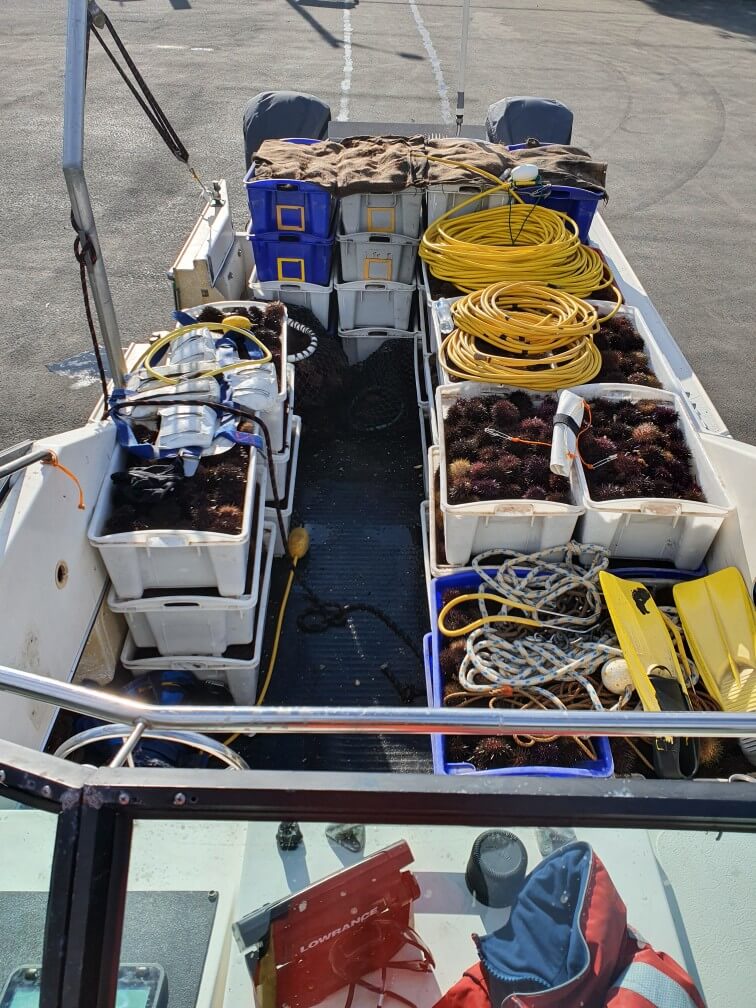

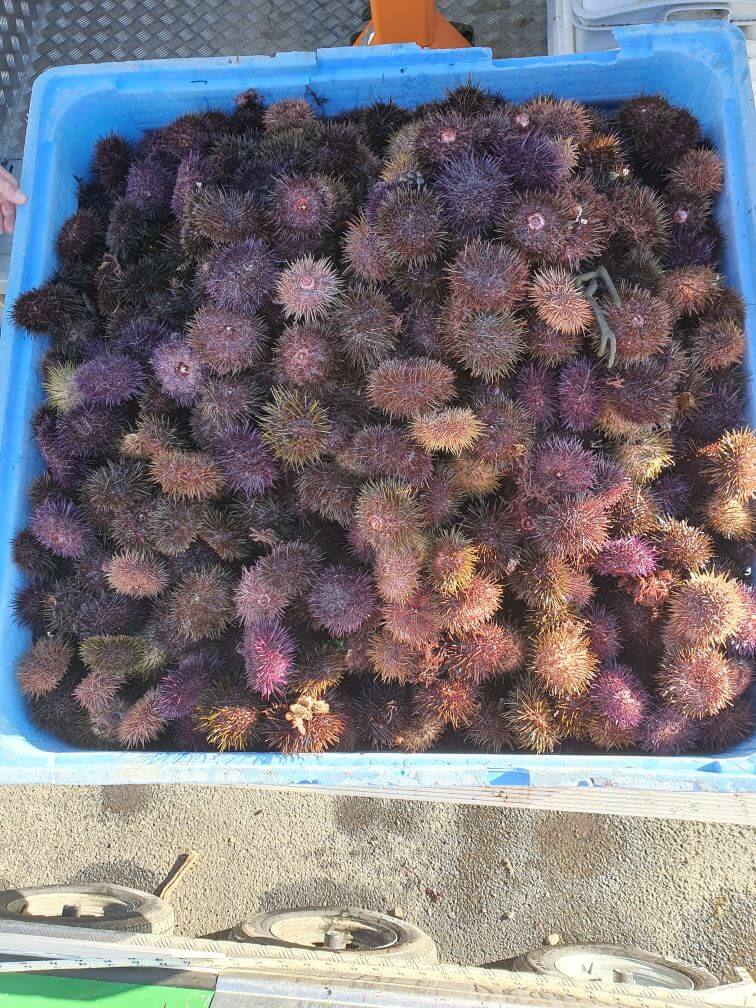
Images courtesy of Tasmanian Commercial Divers Association
Rachelle Hawkins is one of the owners and directors of Seahorse World in Beauty Point, Tasmania and is the original Head Biologist of the seahorse farm, having worked with the organisation since it started. Rachelle has been involved with the National Handfish Recovery Team since ~2016.
Her involvement buoyed by a small article in Hatchery International magazine – where she read about the National Handfish Recovery Team (NHRT) in Tasmania and got in touch with Dr Tim Lynch, the Chair of the Team at the time – who welcomed her to be a part of the team.
After several years looking after Spotted handfish, the NHRT launched the first trial of hatching red handfish eggs in captivity, and asked Rachelle if Seahorse World could support the program by housing the first clutch of red handfish babies. The eggs were collected by IMAS and CSIRO divers, hatched at CSIRO and then transported - by Rachelle - to Seahorse World immediately after release - at approximately 4mm in size, in what Rachelle would later describe as a very slow and careful trip!
We caught up with Rachelle recently to ask her about the recent release of some of the juvenile red handfish that had been raised at Seahorse World over the past two years.
What are some of the challenges in raising baby red handfish?
Seahorse World had been looking after spotted handfish from about 2017, so while I was excited about the prospect about of taking baby red handfish, given they are so much rarer and there are so few left in the wild, it was also quite daunting! I knew that we would be able to feed and care for them - but was also a little nervous.
After 2 years of looking after juvenile red handfish, how did you feel when it came time to return themh to the wild?
It was a real mixture of emotions! On one side, it was great to see the culmination of the project and how successful it had been - and to be a part of that. But on the other side, it was like my babies were being released! So of course I was nervous and worried about that, and really relieved to hear that they have since been resighted in the wild.
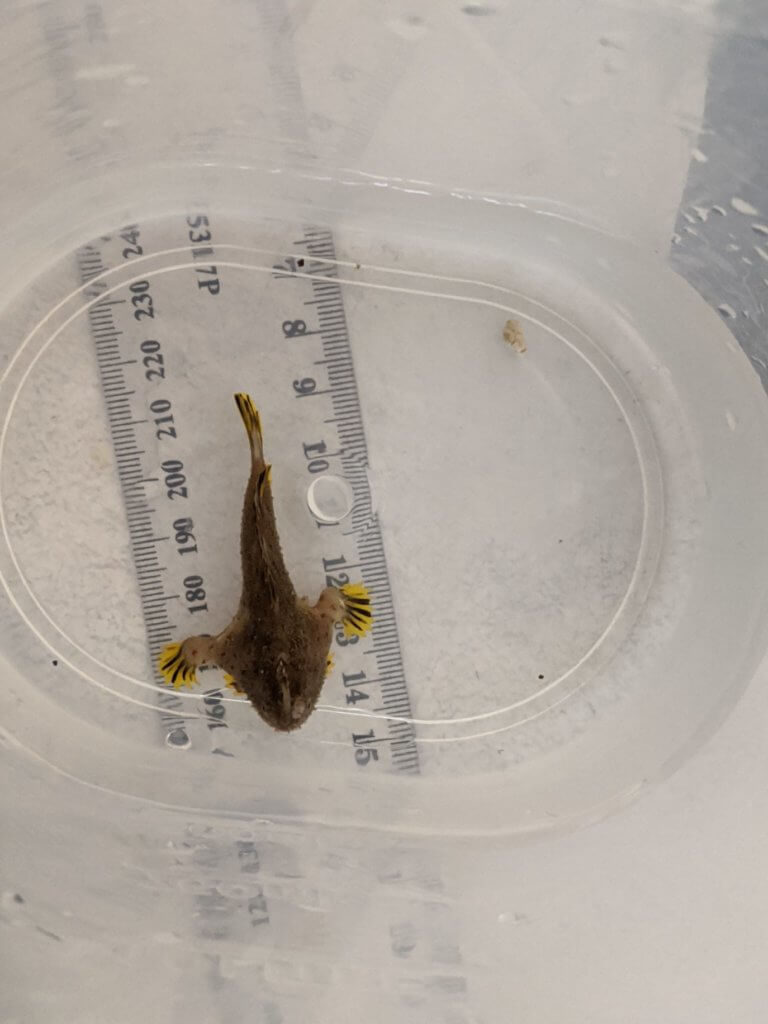

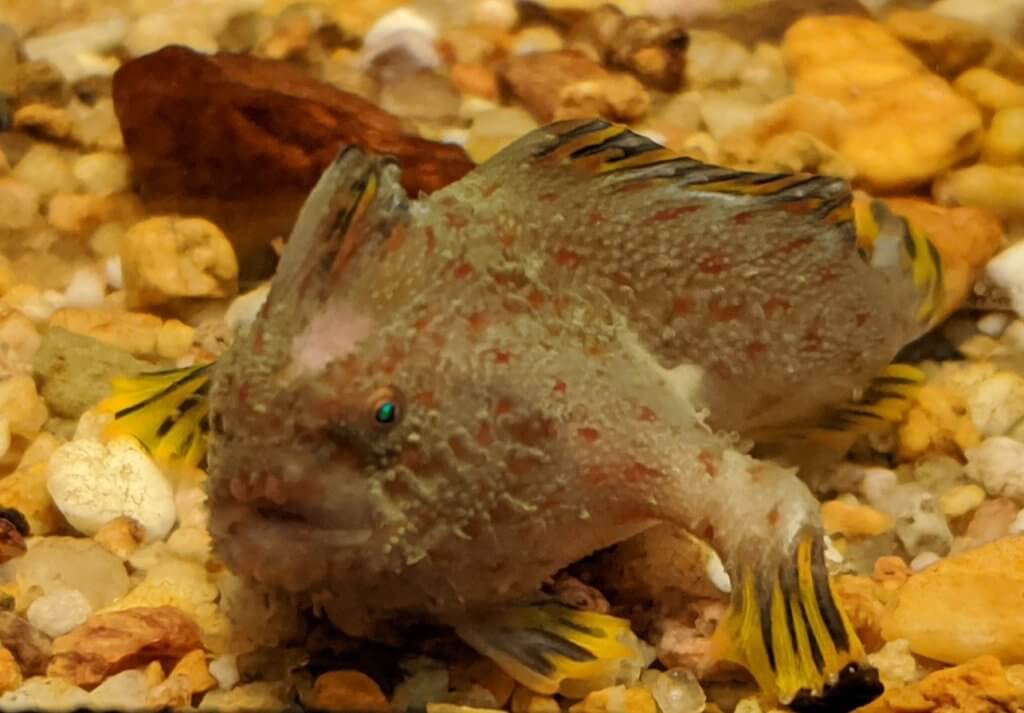
What are your hopes for the future of the work and the species?
I’m very keen to continue my support of the work at Seahorse World and in my position on the NHRT. There is still so much we need to do for this species. We’re hoping that we’ll be able to successfully breed some adults in captivity and help establish a larger captive breeding program – which is likely very important moving forward. But either way, I am hopeful for the future of red handfish.
And finally, if people want to see handfish up close – do you still have any?
Yes! We have some juvenile and adult red handfish – as well as some adult spotted handfish! Plus, of course plenty of seahorses and a variety of other local Tasmanian marine species!
Seahorse World is open 7 days a week year-round (except Christmas Day). From December to April tours depart regularly from 9.30am – 4. 00pm (4.30pm in peak times or if booked). During May to November tours depart on the hour from 10.00am to 3.00pm (4pm tours may be conducted if booked in advance). The guided tour takes around 45 minutes, but please plan to allow at least an hour at Seahorse World. We also have a great café (overlooking the water) and gift shop!

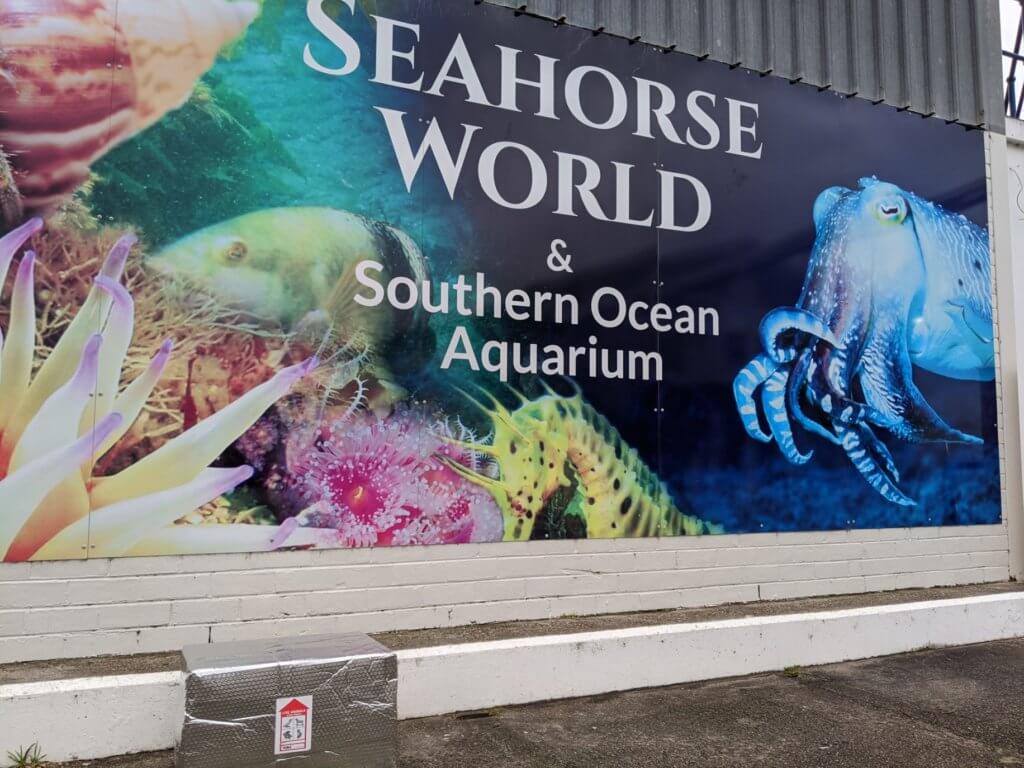
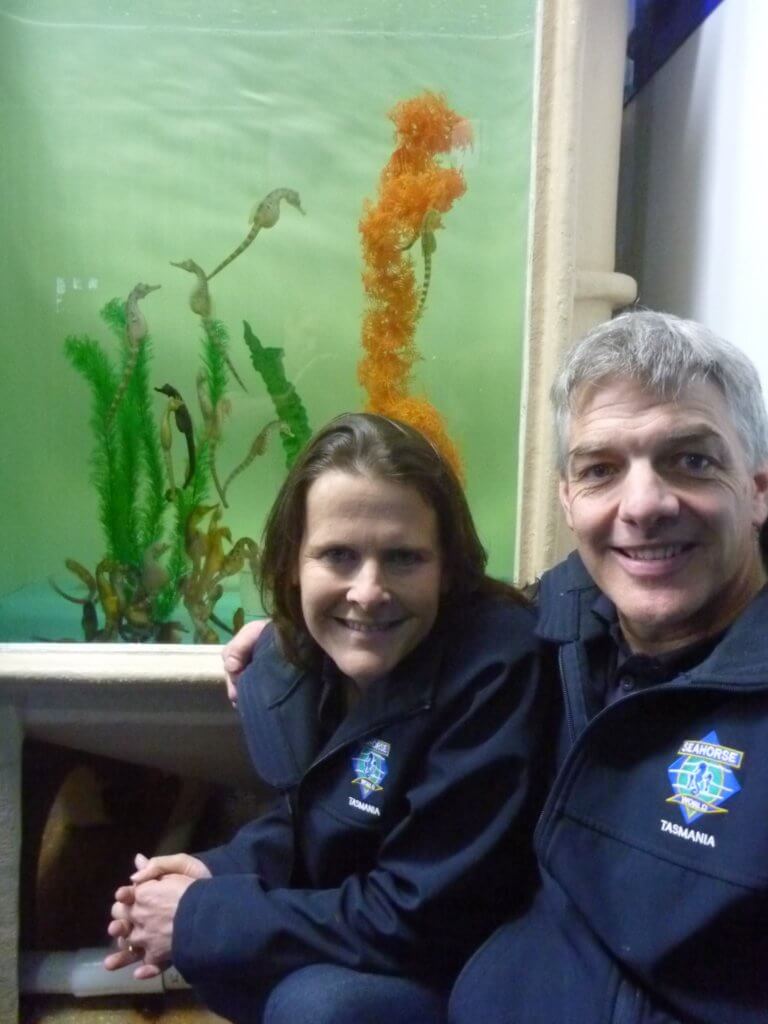

Images courtesy of Seahorse World
We recently caught up with Carlie Devine, CSIRO as a photographer, scientific diver and research technician, to chat about her work over the years with with Spotted handfish.
Background: tell us about yourself!
I grew up in an inland town in Victoria but my family would take my two brothers and I to stay at a caravan park on the coast every summer, where we studied the rock pools intently, scrambled up the tall, yellow cliffs and surfed the rough back beach waves in Torquay.
I remember we always packed the family’s 35mm film camera into the sandy beach bag at the start of the day, it was always with us during the warmer months. Looking back at those photos of my family and I, they are very much warmed with oranges and yellows by the film of the time, and remind me of those long days in the sun, our golden heads and bodies, always covered in sand.
It wasn’t until I moved to cold-water Tasmania in 2010 that I developed an obsession with the underwater world and began my career as a CSIRO photographer and conservationist.
How did you become involved with Spotted handfish work?
I had picked up a camera again in the 2000’s and photography became my job, so when I started at CSIRO, I had the opportunity to be out in the field documenting species in the wild. Much of my work is reliant on long term visual studies that determine or define a species’ behaviour so that we can learn how best to conserve or restore population growths where they are in decline. We also look at habitat, which is a moving feast, due to climate and human behavioural changes and introduced species, so we are finding that habits are changed or destroyed very quickly now.
I started work on the Handfish project in 2015, as a photographer and SCUBA diver. Lincoln Wong, who is now a PhD candidate with the University of Tasmania and CSIRO, completed his Honours year with us, focusing on establishing a population baseline for the spotted handfish in the Derwent Estuary. We also studied their habitat preferences and the overall species-habitat relationship. Our team at CSIRO continues to study the fish, and we have also introduced conservation tactics we hope will assist to boost their declining population.
What a typical day in the field working with handfish is like?
Finding a spotted handfish is hard, I think you really need to train your eye before you start seeing them in the wild and so we like to dive every week during the winter months if the weather allows us to.
To me, every spotted handfish is important, so it’s always really exciting to see one and photograph it. I find that even though I’m looking for them for a whole 60 minutes underwater, I still get surprised when I see one. I think it’s because they like to be alone, they sit on the bottom and often don’t move, so you’re stumbling into their quiet, secret world, they could be out on an open sandy plain or hidden amongst the patterned shells and weeds – it’s pretty special.
A few years ago we started our captive breeding program, I’ll never forget that first week. Two fish were found together which is rare, even during breeding season, so they were collected and put into our tank at CSIRO. A couple of days later I witnessed what we think is the first time, a breeding event in captivity of Spotted handfish. It was an exciting time and I had my camera practically glued to the tank for the next seven weeks capturing the eggs, then eyes and eventually hands inside the eggs. Unfortunately I was at sea when the eggs eventually hatched, but it was quite a sight a few weeks later, to see these beautiful juveniles up close, not yet more than a couple of millimetres long.
Tell us a little about the artificial spawning habitats used for Spotted handfish.
Over the years we have introduced new measures for conservation, and I think the dive I like the most is planting of the artificial spawning habitat (ASH) and the subsequent survey counts of eggs and female fish.
The ASH are made up by local ceramic artist, Jane Bamford, to replicate a stalk that a handfish would normally lay their eggs on. To plant the ASH, we carry down a bag full of the ceramic sticks, along with a trowel and dig them into the bottom so that they stand upright. We plant them from August onwards, ready for the breeding season in October and we now know that the handfish love them, so we are really pleased with the initial results.
We hope to keep the Handfish conservation program running so that we can begin to record positive changes in their population numbers.
Filmed by Carlie Devine
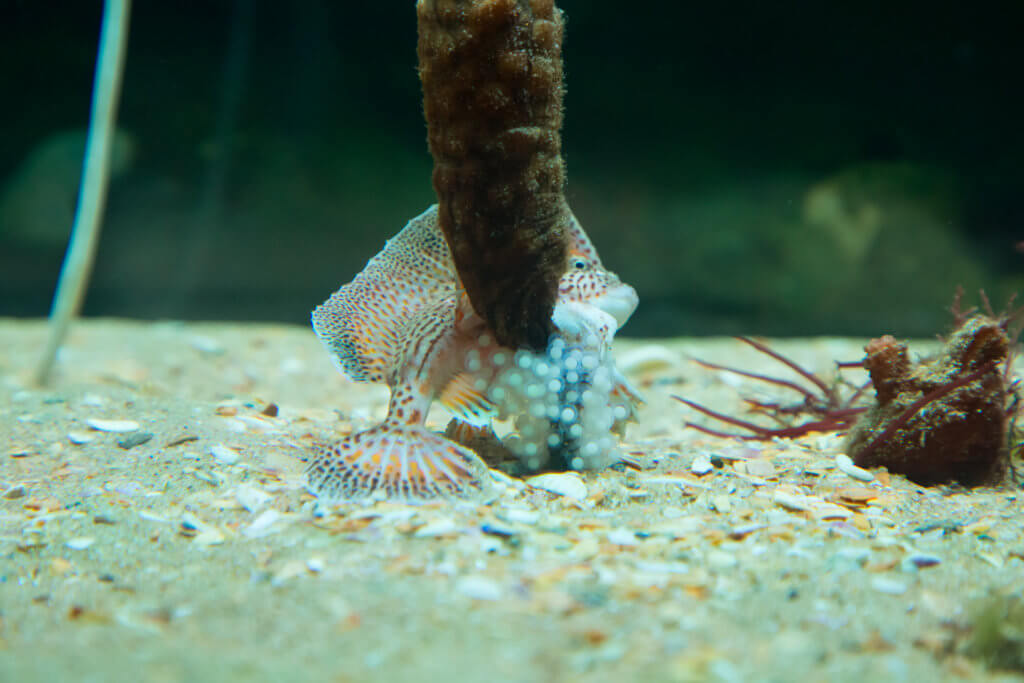

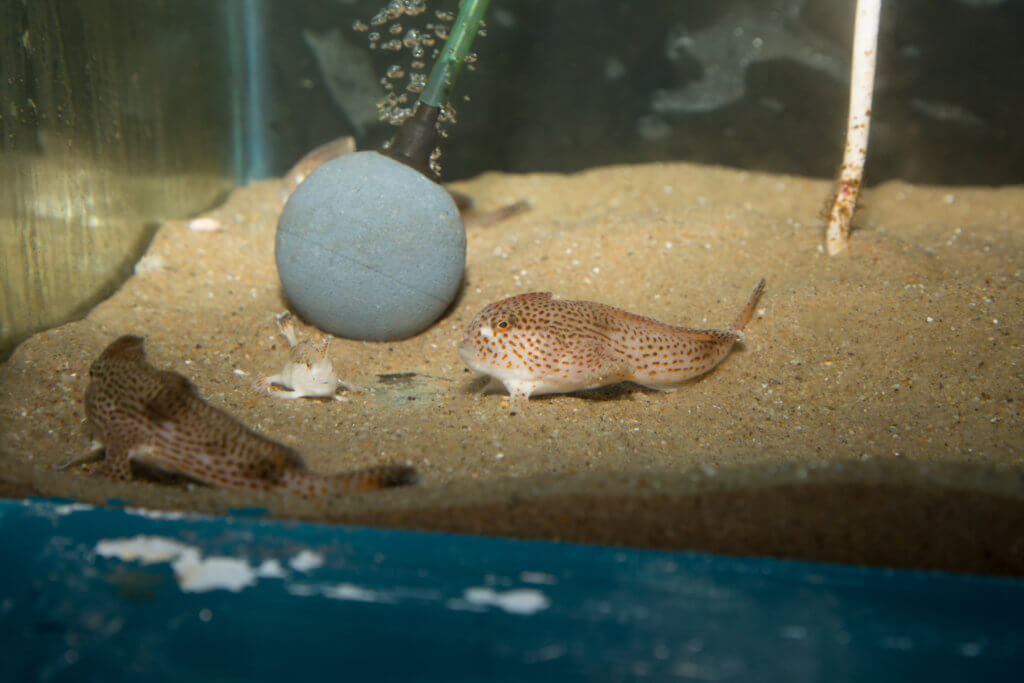
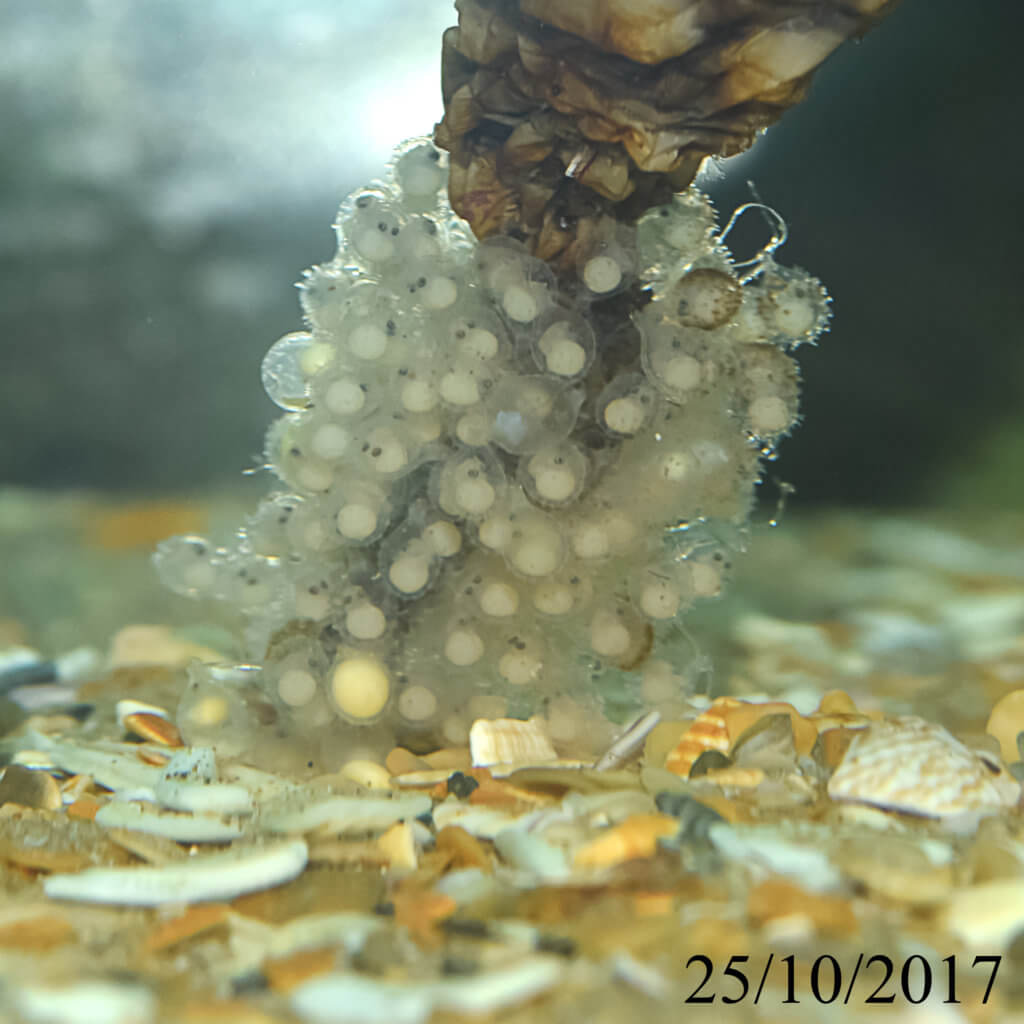
All images by Carlie Devine
Earlier this year, Handfish Conservation Project coordinator Dr Jemina Stuart-Smith was invited to contribute an article to Ocean Geographic on Red handfish. The article has just been published!
You can purchase the full magazine by subscribing to Ocean Geographic HERE, or **you can download the section just on Red handfish HERE:

Thank you to contributing photographers: Antonia Cooper, Kris O'Keeffe, Rick Stuart-Smith.
And of course thank you to the supporters who contribute to this work - including our generous community donors and handfish sponsors!
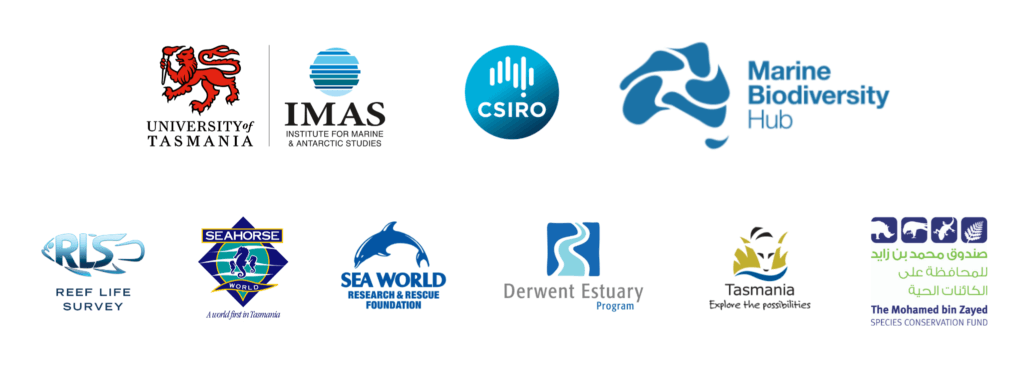
Red and Ziebell's handfish are small cryptic fish that don’t move much and are difficult to find. There are two known populations of Red handfish in south-eastern Tasmania, and Ziebell's handfish have not been seen for over ten years.
But how do we know there are no other populations out there?
While we can’t say for sure that more populations do not exist – there has been a considerable amount of data collected from Tasmania’s shallow marine reefs over the last 29 years. This information comes from the combined Reef Life Survey and Australian Temperate Reefs Collaboration surveys - much of which is coordinated through the Institute for Marine and Antarctic Studies at the University of Tasmania. Although the surveys were not all to look specifically/only for handfish - the survey methods include searches that would reveal any handfish that occur on shallow (less than 30m) rocky reef and seaweed covered reefs - the preferred habitat of Red and Ziebell's handfish.
In fact, there have been 7653 underwater surveys (each survey is a 50 m long transects) undertaken by scientific divers (University staff and trained volunteers) using systematic standardised methods.
No new Red or Ziebell's handfish populations have been recorded during these surveys.
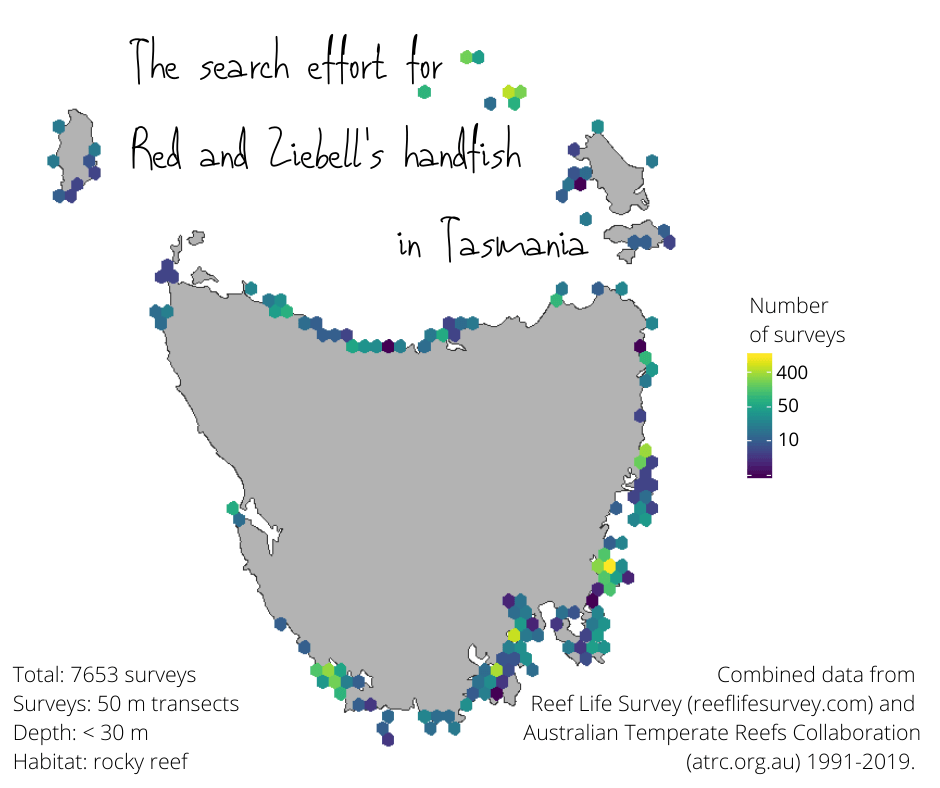
Figure 1 shows the number of surveys conducted in particular areas around Tasmania and the Bass Strait islands from the combined survey work of the Reef Life Survey and Australian Temperate Reefs Collaboration from 1991-2019. Surveys were conducted along a 50 m transect line, and generally in less than 30 m depth (most between 5-10 m deep). These data are contained within the National Reef Monitoring Network of the Integrated Marine Observing System (imos.org.au).
References (data collection methods):
Edgar, G.J., Barrett, N.S., 2012. An assessment of population responses of common inshore fishes and invertebrates following declaration of five Australian marine protected areas. Environmental Conservation 39, 271-281.
Edgar, G.J., Stuart-Smith, R.D., 2014. Systematic global assessment of reef fish communities by the Reef Life Survey program, Scientific Data, 1. https://doi.org/10.1038/sdata.2014.7
New sightings
If you see a Red or Ziebells handfish please report it here: RED ALERT
Header image: Ziebells handfish Credit: Andrew Green)
We caught up with Katherine Richardson, a local Tasmanian writer, who is putting together a children's book on Red handfish.
Katherine – tell us a bit about yourself!
I grew up in Campania, which is a little country town just past Richmond. I went to the local primary school and I had some really fantastic teachers, who really encouraged me to create. I think it was then that my love my writing and drawing really began.
Being in a rural town meant that I was surrounded by a lot of animals, both farm and native, and they were always my muse. Drawing people was something that I really had to force myself to learn, but I’ve always loved drawing animals.
I’m currently studying a Bachelor of Communications at Charles Sturt University which I’ll hopefully graduate from in a couple of weeks, but funnily enough I also did one semester of Marine and Antarctic Science at the University of Tasmania! I’ve always loved marine animals (I think seals or orcas are my favourite) and I really enjoyed learning about them, but I just don’t have quite the right brain for science. Being able to work on this book about the handfish is so amazing because it’s allowing me to explore both sides of my personality, without having to give up on something.
How did you find out about handfish, and have you always been interested in wildlife?
I actually found out about the handfish through my mum. She and my dad went up north for a trip and ended up visiting Seahorse World, where they got to see the red handfish that are being looked after there. She was so enamoured by this fish and it started to peak my interest too. I went to a handfish open day down at the Institute for Marine and Antarctic Studies with her last year and I was sold. I just think they’re such awesome creatures and I really wanted to be able to use my skills to help them.
As I mentioned, I’ve always loved animals and wildlife and especially had a soft spot for marine animals. One of my biggest dreams in life is to be able to visit Antarctica one day. I don’t really want to go as a tourist though, it’s important to me that if I was to go, I would be contributing something or helping in some way. Also I think if I saw an orca in real life I might just die of happiness.
What made you decide to write a children’s book on handfish?
I’d recently attended the Hobart Writers Festival and I went to a talk there on environmental children’s books. The subject was super interesting to me, again – bringing together two of my biggest passions, and I started to think about what kind of animal I’d like to write about. This was just before going to the IMAS open day so it all sort of fell in place perfectly.
Can you give us a brief run-down of the plot and the message you hope to get across
Yes! Okay, well I’m not sure if it’s actually been mentioned anywhere yet, but the book will be called ‘Diary of a Red Handfish’. It’s going to be in the form of diary entries from one of the babies that IMAS is currently raising. It’s basically a retelling of that project from the handfish’s perspective! It’s been really interesting to write, because obviously the project is still going, so I’m having to fill in the blanks here and there. I have the ending written, but anything could happen this far out, so I think in that way it’s a bit different to a ‘normal’ children’s book.
I really just want to be able to help bring awareness to these animals using everything that I can, it’s so important to me that we don’t lose them, and I think one of the best ways to make sure that doesn’t happen is to ensure that as many people know their story as possible.
And the big one – when do you hope to finish?! And (perhaps it’s too early) but do you have other book ideas planned afterwards?
The current plan is for the book to be released at about the same time as IMAS releases the handfish back into the wild. We thought this would be a really good opportunity to once again show art and science working alongside one another and also to bring awareness to both sides of the project.
As far as another book goes, I always have ideas swimming around in my head (pun intended), but there’s no concrete plan for another children’s book at the moment. I’m currently working on my first novel as well, so I’m hoping to spend some time focusing on getting that ready for 2021.
Follow Katherine: https://www.facebook.com/KatherineRichardsonWriter/ | @KatherineRichardsonWriter | https://katherinerichardson.net/
Images: Katherine at work, and some of the art work that she has produced in generating awareness about handfish through her upcoming book
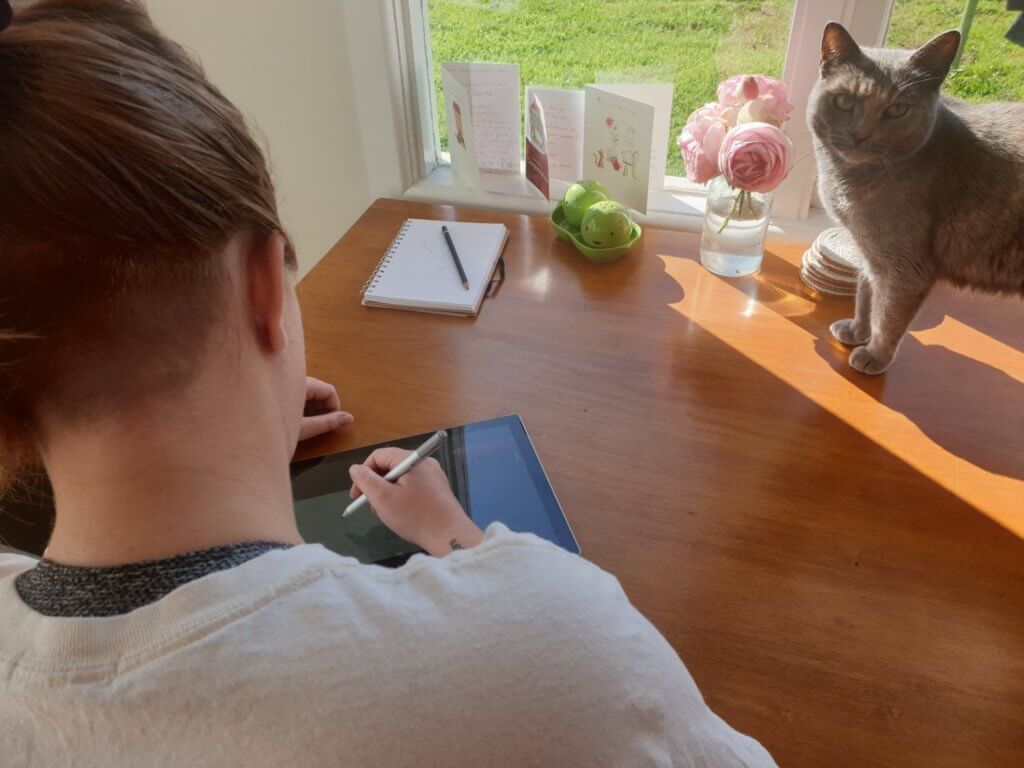
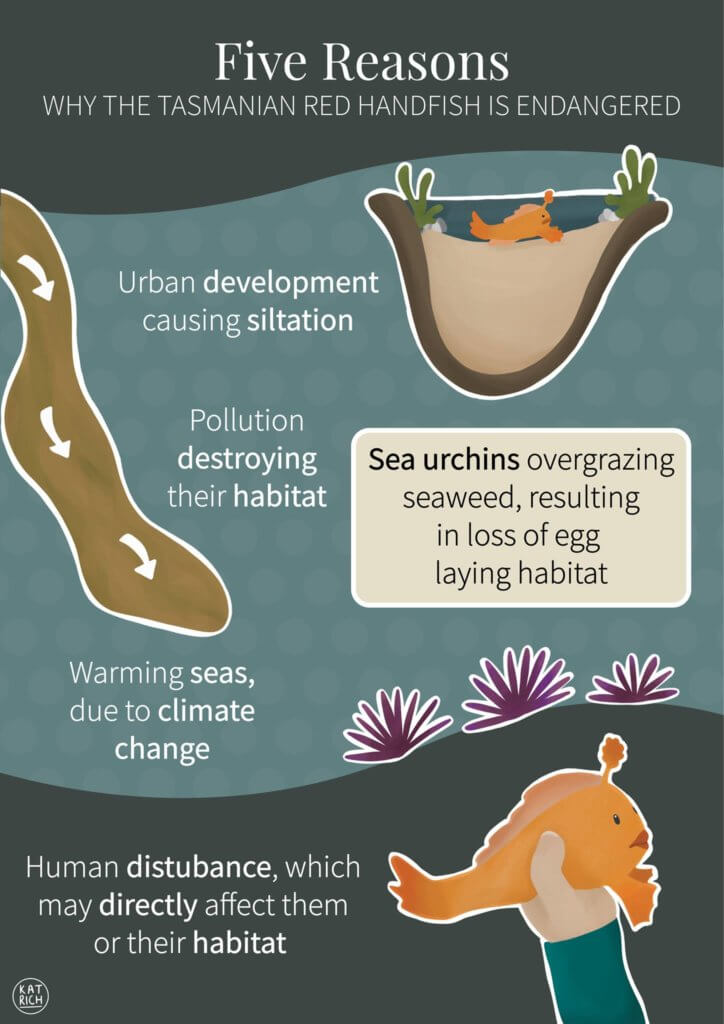
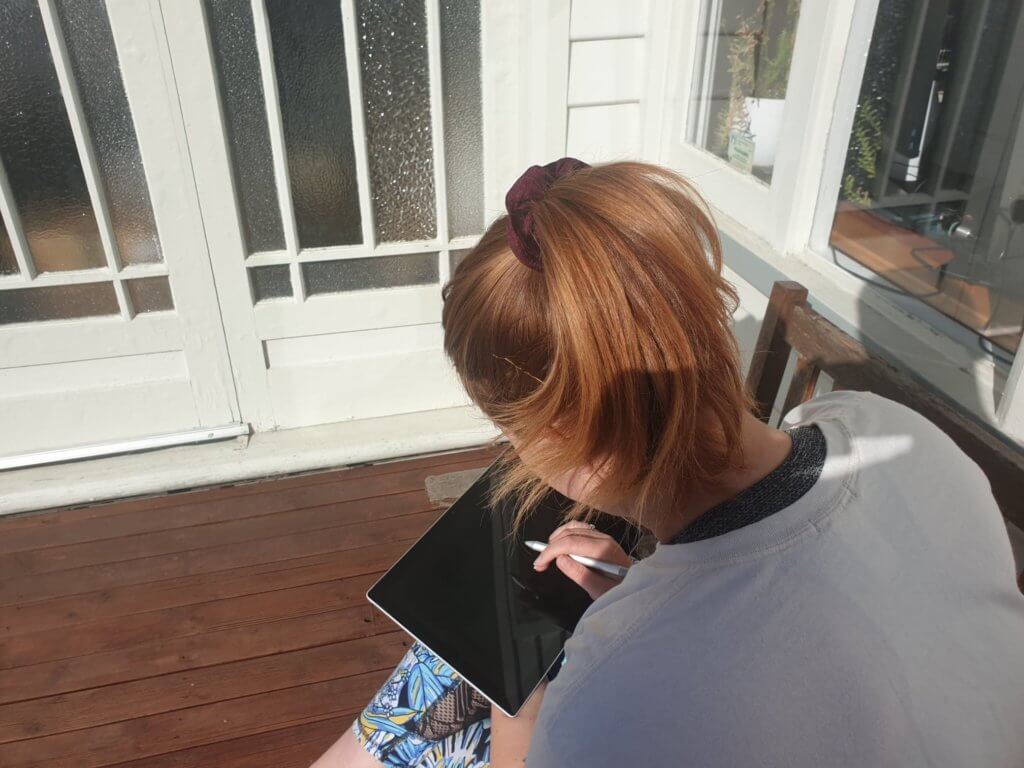
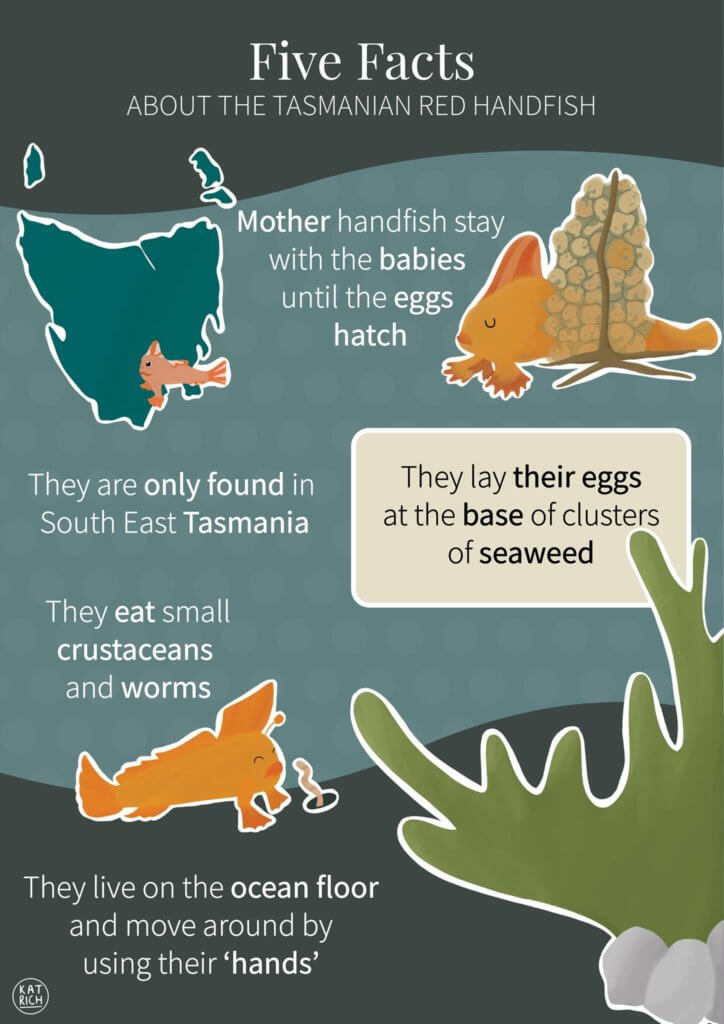
We caught up with Helen O'Neill - a research assistant at CSIRO. Helen is involved in a number of projects including the Australian National Fish Collection, developing and populating fishIDER (a bilingual web-based fish identification tool to improve fish identification skills and monitoring capacity in Indonesia), and, of course - Spotted Handfish monitoring.
Background: tell us about yourself!
I grew up in Surrey in the UK, I always had a love and interest in animals and the great outdoors, including a fascination with fish, and remember admiring my mother’s goldfish tank when I was growing up. At 8 or 9, I remember winning a diseased (unbeknownst to me) goldfish at the local fair and bringing it home, much to my mother’s annoyance. The fish keeping hobby later continued more successfully and progressed to me working in a retail aquarium shop. After a year or so I needed a change so embarked on a year’s backpacking trip around Australia.
After returning to the UK I got another retail aquarium job, and it was here, caring for all the beautiful fish with their myriad designs and colours, that I wanted to take my passion further and decided that a career with fish and science was the future for me. Upon this realisation I enrolled at Bangor University in North Wales and completed a degree in Applied Marine Biology in 2016.
Later that same year I moved to Hobart and began working at CSIRO as a volunteer in the Australian National Fish Collection looking at the morphology of shark egg cases. In February 2017 I secured a position administrating the development of a fish identification website, fishIDER (www.fishider.org), which aims to assist and improve the fish identification skills of fisheries staff in Indonesia, with the overarching aim to improve fisheries management there.
Handfish work
In mid-2018 I had the opportunity to begin working with the Handfish Recovery Team on the Handfish Recovery Plan (through the Marine Biodiversity Hub). Being a keen diver, passionate about fish and marine conservation – I jumped at the opportunity!
The two aspects of the Handfish Recovery Plan I participate in are the Handfish monitoring program, including the direct conservation action of deploying Artificial Spawning Habitats and the experimental trial of Environmentally sensitive mooring (ES-mooring), as both a diver and boat skipper.
The aim of the ES-mooring project is to compare the changes of the benthic communities, including infauna (animals living in the sediment), epifauna (animals living on the sediment), and demersal fish (including spotted handfish) before and after the deployment of an ES-mooring against traditional swing moorings. This project will help us better understand the effects moorings have on the benthic community, allowing for better conservation and protection of handfish and their habitat. This work is being completed as a Ph.D. project by Lincoln Wong. The handfish monitoring program aims to improve knowledge on the distribution, abundance, population trends, habitat preferences and threats of handfish to better understand this species for improved conservation, as well as to increase their spawning success.
A typical day in the field...
Fieldwork for these projects involves a lot of prior planning and organisation. Safety while on and under water is paramount and the team all work together to make sure everyone stays safe. Suitable weather is essential for diving and it needs to be continually monitored throughout the day. A surface attendant is always on hand to help the dive team enter and exit the water and to ensure conditions above water are safe.
A typical day in the field working usually involves a team of four comprising of divers, a dive coordinator and if required, a qualified Coxswain to skipper the vessel. The team will meet in the morning to load our previously prepared dive gear and field equipment onto the vessel. A lot of equipment is required for scientific diving, in addition to the usual scuba diving equipment consisting of Buoyancy Control Device’s, dry suits, regulators, mask, fins, weights etc. we also dive with, tape measure, calipers, slate for writing data, underwater camera with strobes, coring equipment, a reel attached to a safety float holding a GPS and dive flag, shark deterrent, and additional gear if required. Once at the dive location the divers will gear up and enter the water to begin the work.
Diving for the ES-mooring project involves a pair of divers tasked with collecting sediment samples and completing a visual survey, complemented with photographs, of the sea floor. These tasks are undertaken along a ~10 meter transects radiating out from the mooring anchor and repeated in a north, south, east and westerly direction. The main challenge of these dives is the limited visibility caused when the fine, soft sediment is disturbed, causing a sediment cloud which, in and low current conditions may take a long time to settle. In some cases, the visibility becomes so bad we must abort dives and complete them later once visibility has improved.
Spotted handfish monitoring
Spotted Handfish monitoring surveys consist of a pair of divers who swim along a transects searching for handfish, for approximately 30 minutes between 3–12 meters depth. If we are lucky enough to come across a handfish we take photos from both the left and the right-hand side of the fish for identification purposes. These photos also provide a time stamp which is matched to a GPS towed by one of the divers allowing us to pinpoint the fish’s exact location. To provide more comprehensive data on the population, we also record the depth the handfish is located at, its length, and record a general observation of its behaviour.
Of the two projects the handfish monitoring surveys are my preferred dives, you get to cover a bit more ground and have a higher chance of seeing some other marine life such as skate, stingarees and invertebrates while searching for the handfish. Plus, you have a higher change of seeing the handfish themselves, which is always a special moment.
I would say the number one challenge with diving work in Tasmania is the weather! It is frequently too windy or too murky to dive and you can guarantee that it is always cold, with water temperatures dropping to 11 degrees in winter. I wear a drysuit year-round while diving in Tassie, but with dives lasting up to 70 minutes, you can still lose a lot of body heat during that time. During winter I will have up to 5 layers of clothing and thermals on underneath the drysuit so I don’t get too cold during a dive. Working on the Handfish Recovery Plan and having an opportunity to get up close and personal with wild handfish makes the cold waters and poor visibility of the Derwent worth it!
More information/articles:
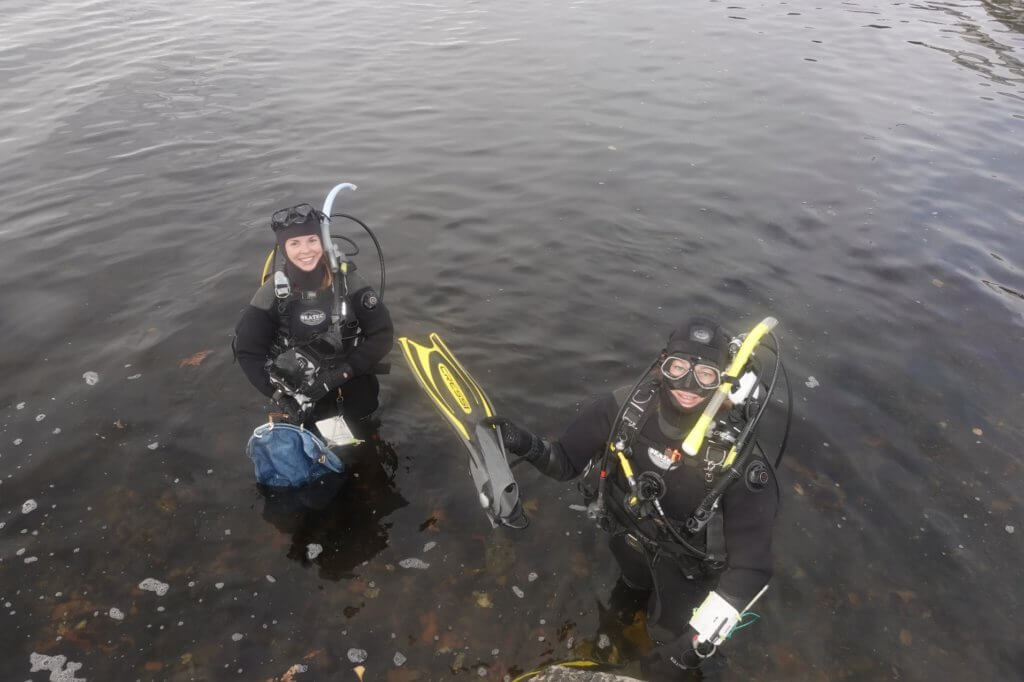
Figure 1. Helen O'Neill and Carlie Devine Entering the waters of the Derwent to begin a handfish monitoring survey

Figure 2. Lots of equipment is required to perform scientific diving operations.
Our Red Handfish IMAS/CSIRO PhD student, Tyson Bessell, is incorporating a genetic component into his research. Under the direction of expert geneticists, Dr Sharon Appleyard (CSIRO, Hobart) and Dr Carolyn Hogg (University of Sydney), he will be looking at several key areas, including:
And if it’s successful, not only will it present an effective/reliable method for looking for new populations of red handfish… but it’ll also be incredibly useful for similar work with other cryptic/rare species.
More about DNA
Every living organism has the same four nucleotides (‘building blocks’)—A, C, G, and T— that make up its’ DNA sequence (and therefore encodes the genetic information specific to individuals and species). It’s just the order and how many building blocks that differ.
We first need to “screen the handfish DNA” for the most appropriate gene or DNA fragment. This just means figuring out the specific order that the nucleotides occur in specific regions of the DNA in Red Handfish. Sounds easy enough…. But for comparison, the human genome contains over 3.5 billion of these genetic letters…
How we sequence genes in Red Handfish:
More about eDNA
Environmental DNA (eDNA) is a complex mixture of DNA (from many organisms) that is found in a sample (e.g. water). Once we know the sequence of a gene region in a species – we can hopefully search for it using eDNA techniques (i.e. analysing water samples to look for handfish DNA).
Why it would be useful for handfish:
Tyson has spent a great deal of time learning genetic methods in both University of Sydney and CSIRO (Hobart) labs – pictured below. We’ll keep you updated on the findings from this research.
